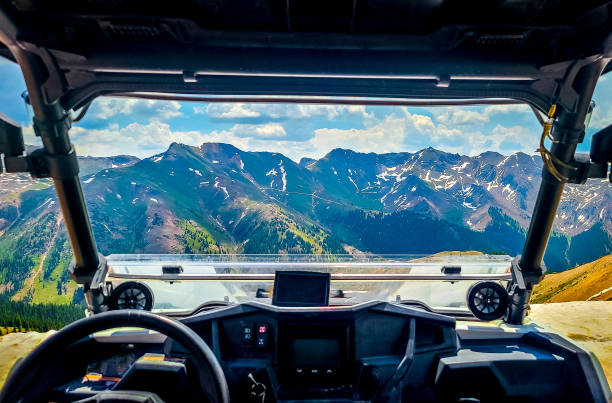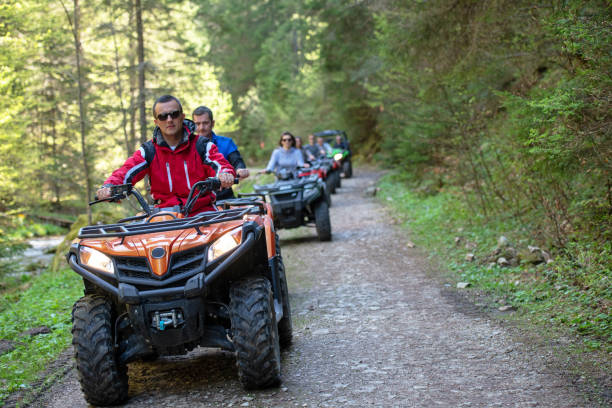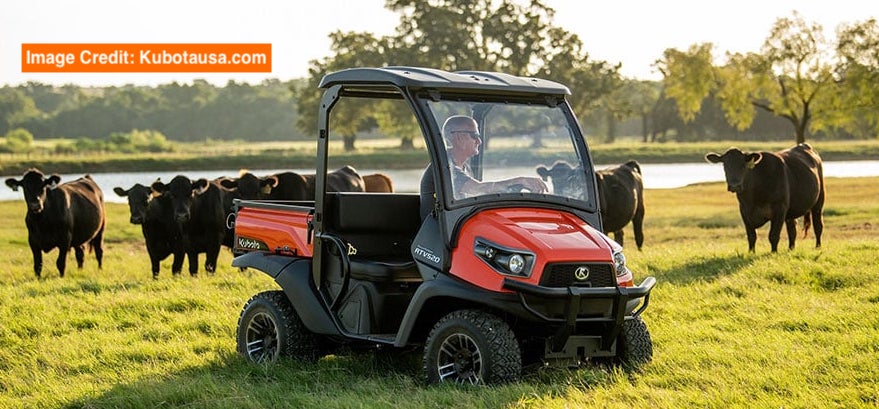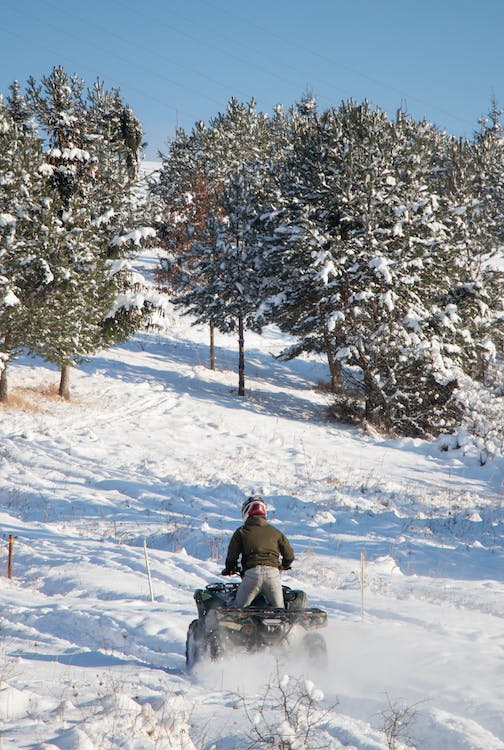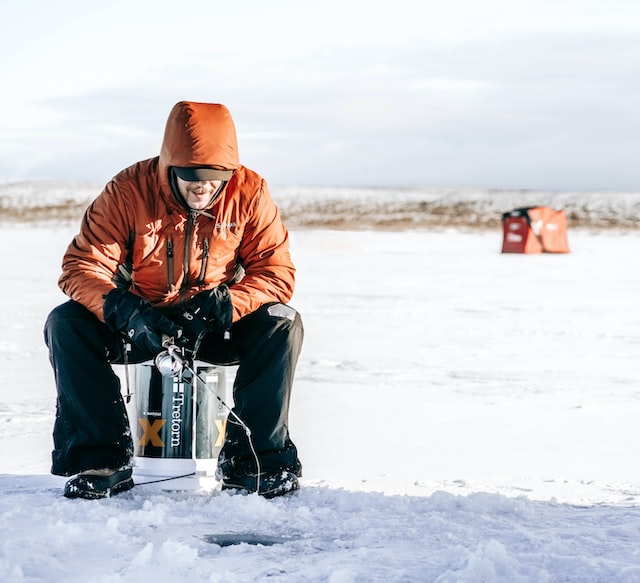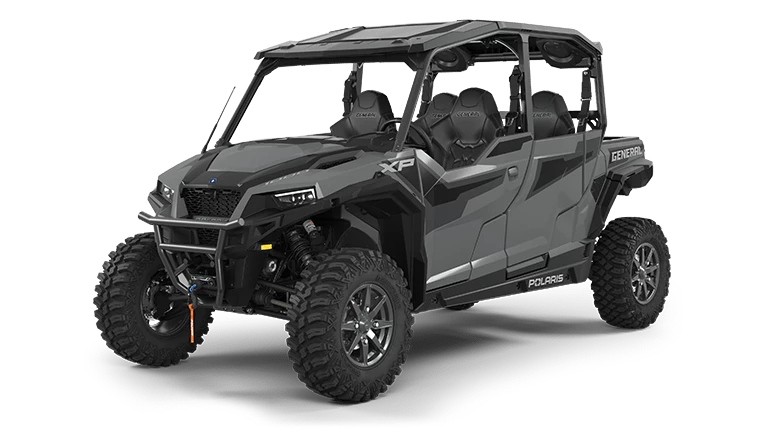As an Amazon Associate I may earn a commission from qualifying purchases at no additional cost to you.
For those seeking to maximize their off-road experiences, ATV and side by side adventures offer excitement throughout the entire year. Each season presents unique opportunities and challenges that call for specific planning and preparation.
Understanding how to best prepare for each season ensures that outdoor enthusiasts can safely and effectively enjoy their adventures.

Winter transforms landscapes into thrilling terrains for ATV and UTV rides, provided that riders adapt to the cold conditions and navigate snow safely.
Spring renews trails and opens up new paths for exploration, though mud and water crossings may require special gear and skills.
In summer, longer days afford endless exploration opportunities, while autumn brings beautiful foliage and varied trail conditions.
Preparation is key for each seasonal adventure, from gear selection to trail research. Riders who plan meticulously are better positioned to handle the changing conditions, ensuring a positive experience on every outing.
Understanding ATVs and Side-by-Sides
ATVs and side-by-sides (UTVs) are popular off-road vehicles designed for various terrains. They offer different features and capabilities suitable for adventure enthusiasts and utility work.
Types of ATVs and UTVs
ATVs, or all-terrain vehicles, are designed for single riders and are useful for exploring trails. They typically have handlebars for steering and can maneuver through tight spaces.
UTVs, known as side-by-sides, provide seating for two or more passengers with a steering wheel and foot pedals for control. They are ideal for group adventures or transporting supplies.
Common types include sport, utility, and youth models. Each type has varying speed capabilities, load capacities, and recreational or work purposes. Individuals can choose based on their specific needs within off-road environments.
Key Features for Off-Roading
Several features enhance the off-roading experience. Ground clearance is essential, allowing vehicles to pass over obstacles without damage. Higher ground clearance is preferable for rough terrains.
Suspension systems absorb shocks from uneven surfaces, providing comfort and stability. Traction is critical, so tires designed for mud, sand, or rocky surfaces are necessary.
Protection features, like skid plates and roll cages, ensure safety. Winches are often added for self-recovery or to assist others.
Storage options and towing capabilities in UTVs make them suitable for carrying gear or heavy loads. Selecting the right features depends on intended use – be it trail riding, hunting, or utility tasks.
Differences Between ATVs and Side-by-Sides
ATVs are generally smaller and more agile compared to side-by-sides. This makes them ideal for solo rides on narrow trails. They prioritize maneuverability over capacity.
In contrast, side-by-sides offer more seating and cargo space, which is advantageous for family outings or work environments requiring transportation of equipment or passengers. The steering mechanisms also differ: ATVs use handlebars while side-by-sides have a steering wheel setup similar to cars.
Safety features more prominent in side-by-sides include seatbelts and roll cages. These differences influence the choice depending on the activity’s nature and personal preference for recreational or utilitarian use.
Prepping For the Seasons
Maintaining ATVs and UTVs is essential for a safe adventure experience throughout the year. From mud and sand dunes to snowy terrain, seasonal preparation ensures smooth rides and thrilling explorations under various conditions.
Spring Readiness
Spring brings soft terrains and fresh blooms, requiring unique preparations for ATVs and UTVs. Vehicles should be inspected for any wear and tear from winter storage.
Tires need checking to ensure appropriate pressure and sufficient tread for muddy landscapes.
Fluids, including oil and coolant, should be replaced to optimize engine performance. Attach skid plates to protect against rocks and debris in meadows.
Replacing air filters is vital for dustier environments and frequent inspections guarantee a seamless transition into warmer weather.
Summer Adventures
Summer adventures often involve exploring sand dunes and dusty trails. It’s crucial to examine the cooling system to prevent overheating during long rides under the sun.
Regular checks of radiator hoses and coolant levels help maintain vehicle efficiency.
Equipping sand-specific tires offers better traction on dunes. Adding a snorkel can protect the vehicle’s engine from sand intrusion. Packing additional safety gear such as sunblock and hydration systems ensures a smooth and comfortable ride.
Fall Expeditions
With fall foliage creating breathtaking views, it’s a great time for expeditions. This season demands special attention to terrain and visibility.
Lighting systems should be tested for efficiency as days become shorter. Consider high-intensity LED lights for clearer paths in dim lighting conditions.
Inspecting and adjusting suspension systems ensures better handling on fallen leaves and wet ground. A winch may be necessary to navigate muddy paths or assist others in tricky situations, making it an essential tool for fall explorations.
Winter Preparations
Winter conditions present unique challenges that require comprehensive preparations. To tackle snow and icy roads, investing in studded tires or tire chains can significantly enhance grip.
Checking the battery is critical, as cold weather can reduce its efficiency.
Adding a windshield offers protection against icy winds and attaching snowplows transforms ATVs for functional too. Ensuring all fluids are suited for lower temperatures protects the engine. Preparing these elements creates safer and more enjoyable winter rides.
Equipping Your Vehicle

Outfitting your ATV or UTV properly enhances both functionality and enjoyment. Consider essential accessories for safety, comforts to make rides more pleasant, and smart storage for longer adventures.
Essential Accessories
When setting up an ATV or UTV, safety and functionality come first. Quality helmets are crucial for head protection. LED lights improve visibility in low-light conditions.
Winches are vital for rescuing your vehicle from tricky spots. Brush guards protect the vehicle’s front, helping prevent damage from debris or rough terrain.
Tires with suitable tread patterns ensure better grip on the chosen terrain, whether it’s mud or rocks. Mirrors provide additional rear visibility. First aid kits should never be forgotten, ensuring preparedness for any minor injuries. These accessories ensure a balance between safety and functionality.
Comfort and Convenience Add-Ons
To enhance comfort during rides, adjustable seats provide customizable support for long journeys. Heated grips and seats are beneficial in cold weather, offering warmth and comfort.
Waterproof seat covers protect against rain and mud, preserving the interior’s integrity. Sound systems, specially designed for ATVs and UTVs, allow music or communications on the go.
Cup holders keep beverages securely in place. Incorporating charging ports can keep essential devices powered throughout the trip. These additions transform a basic ride into a relaxing and enjoyable outing, catering to individual preferences.
Storage Solutions for Longer Trips
Preparing for longer adventures requires practical storage solutions. Cargo racks and bags provide ample space to stow away essentials like tools, extra fuel, and camping gear.
Lockable storage boxes offer secure space for valuables when away from the vehicle. Saddlebags are ideal for keeping smaller items within easy reach.
Tank bags provide quick access to maps or snacks, proving handy during rest stops. Dry bags ensure gear stays dry in wet conditions. Coolers designed for ATVs and UTVs keep food and drinks chilled for extended periods. These solutions make it easier to carry necessary equipment and supplies, ensuring readiness for any extended journey.
Riding Techniques and Safety
Riding all-terrain vehicles (ATVs) and side-by-sides involves being prepared for various terrains, equipping oneself with proper safety gear, and adhering to responsible riding practices. Mastering these aspects ensures a safe and enjoyable experience.
Mastering Different Terrains
Riders encounter numerous terrains including mud, sand, rocks, and snow. Safe navigation requires adapting techniques to each landscape. In muddy areas, reduce speed and avoid sudden maneuvers to maintain control.
Sandy terrains demand a lighter touch on the throttle to prevent losing traction. Rocky landscapes warrant careful navigation, steering clear of larger obstacles and using the suspension to absorb impacts.
For snowy conditions, maintaining a steady speed and wearing proper tire chains can prevent slippage. Understanding terrain challenges ensures better control and minimized risk.
Safety Gear and Practices
Wearing the right safety gear is critical. Helmets, goggles, gloves, and boots are non-negotiable to protect against injuries. Proper clothing shields riders from the elements and potential abrasions.
Routine maintenance checks on ATVs and side-by-sides reduce breakdown risks and enhance performance. Checking tire pressure, brakes, and fuel levels is vital before each ride.
In addition, emergency kits containing first-aid supplies and repair tools should be readily accessible.
Adhering to safe practices reduces accidents and ensures that riders are prepared for unexpected situations.
Responsible Riding Etiquette
Respecting trail rules and other riders is essential. This includes yielding to pedestrians and smaller vehicles, ensuring passing is safe and controlled.
Being aware of local regulations helps avoid penalties and preserves the environment.
Keeping noise levels to a minimum respects surrounding wildlife and residents. Littering or going off-designated trails causes environmental harm. Responsible riders take pride in maintaining clean and respectful trail conditions, and ensuring their enjoyment does not come at the expense of others.
Destination and Trail Selection

Selecting the right trail and destination is vital for a rewarding ATV and side-by-side adventure. Nestled in remote landscapes, trails offer diverse terrain and unique experiences, yet require knowledge of etiquette and preservation practices.
Choosing the Right Trail
Selecting the appropriate trail requires understanding the skill level of all participants.
Trails range from beginner-friendly paths to more challenging terrain for advanced riders.
It is important to consider the vehicle type, whether ATV or UTV, and ensure compatibility with trail conditions.
Weather conditions and seasonal restrictions can impact access and trail safety.
Researching local regulations, trail maps, and recent reviews helps in making an informed choice.
Online resources provide updates and recommendations about trail conditions, helping riders avoid surprises.
Popular ATV Destinations
Several destinations are renowned for offering unforgettable experiences for ATV and UTV enthusiasts.
Moab in Utah is famous for its slickrock trails and picturesque views. California’s Rubicon Trail provides a challenging terrain with stunning scenery.
Hatfield-McCoy Trails in West Virginia offer over 700 miles of interconnected trails, catering to various skill levels.
Arizona’s Imperial Sand Dunes attracts those interested in exploring vast, sandy landscapes.
These destinations often cater to outdoor enthusiasts with rental options, guided tours, and camping facilities.
Trail Etiquette and Preservation
Respecting trail etiquette is crucial to ensuring a positive experience for all.
Riders should maintain appropriate speeds and yield to those passing in the opposite direction.
Riders must also pack out all waste, keeping natural landscapes pristine.
Preservation of trails involves staying on designated paths to prevent erosion and habitat destruction.
Avoid venturing off-trail, as this can damage sensitive ecosystems.
Engaging in volunteer trail maintenance programs supports longevity and accessibility of trails for future riders.
Ownership Considerations
ATV and UTV ownership requires a commitment to proper maintenance, legal adherence, and understanding rental options.
Maintenance and Upkeep
Regular upkeep ensures safety and longevity for ATVs and UTVs. Key maintenance tasks include engine oil changes, tire checks, and brake inspections.
Depending on the terrain and frequency of use, these vehicles may require more frequent servicing.
For those using ATVs for work or hunting, additional equipment checks are necessary.
Lubricating moving parts and inspecting protective gear also help prevent damage.
Scheduled professional service is advised to address comprehensive mechanical needs, further safeguarding the vehicle’s condition.
Adopting a proactive maintenance schedule reduces the likelihood of breakdowns on adventurous terrains.
Owners should maintain detailed service records to track all maintenance activities and parts replacements. This not only helps in scheduling future tasks but also retains the vehicle’s value.
Legal Requirements and Documentation
Legal compliance is crucial for ATV and UTV owners.
Requirements vary by location, often including registration, titling, and insurance.
In some regions, operators must hold a valid driver’s license or permit, and specific age restrictions may apply.
Safety is paramount; wearing helmets and using seatbelts, if available, is mandated in many places.
Another essential aspect is maintaining accurate and current documentation.
Owners should keep copies of registration and insurance documents readily accessible.
Legal fines or penalties can occur if paperwork is incomplete or out-of-date.
Owners planning to ride on public lands or trails must check for any specific permit requirements or seasonal limitations that could affect access.
Staying informed about local regulations ensures compliance and a smoother riding experience.
ATV Rental Options
For those hesitant about full ownership, ATV rentals offer flexibility.
Renting can be ideal for those who only need ATVs for specific activities, like seasonal hunting trips or work-related tasks.
When considering rentals, it is important to compare costs. These include rental rates and any additional fees for equipment or insurance.
Ensure the rented vehicle is in good condition. Also, inquire about included maintenance services.
Rentals often provide a try-before-you-buy option. This allows potential owners to experience different models before making a purchase decision.
It’s essential to review rental agreements thoroughly to understand terms, especially concerning liability and responsibilities.
Many rental services offer diverse vehicle choices, from rugged ATVs to more comfortable UTVs, suiting various needs and preferences.

